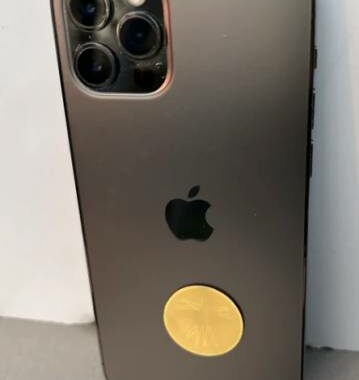Shield Your Health: Complete EMF Blocker for iPhone Protection Guide and Scientific Analysis
Electromagnetic field concerns have intensified as smartphone usage reaches unprecedented levels, with the average person spending over 5 hours daily on their device. EMF blocker for iPhone products have emerged as a controversial solution category, promising to reduce radiation exposure from mobile devices while maintaining full functionality and connectivity.

The intersection of health consciousness and mobile technology has created a billion-dollar industry focused on EMF protection products, ranging from phone cases and stickers to whole-home shielding solutions. Understanding the scientific evidence behind these products, their actual effectiveness, and practical alternatives empowers consumers to make informed decisions about protecting themselves and their families from potential electromagnetic radiation exposure.
This comprehensive analysis examines EMF blocker technologies, scientific research on their effectiveness, regulatory perspectives, and practical recommendations for reducing iPhone radiation exposure through proven methods backed by independent testing and expert analysis.
Understanding EMF Radiation from iPhones
Radiofrequency electromagnetic fields from iPhones occur when the device transmits and receives cellular signals, Wi-Fi data, and Bluetooth connections. iPhones emit non-ionizing radiation measured in Specific Absorption Rate (SAR), which quantifies the rate at which the body absorbs RF energy during device operation.
Current iPhone models emit SAR levels ranging from 0.95 to 1.19 watts per kilogram (W/kg) when held against the head, well below the Federal Communications Commission limit of 1.6 W/kg. The iPhone 16 Pro Max, for example, emits 1.01 W/kg at the head, representing approximately 63% of the FCC’s safety threshold.
Exposure levels vary significantly based on usage patterns, with body-contact scenarios creating different absorption rates than handheld use. Studies indicate that carrying phones in pockets creates zero-distance separation, potentially increasing localized exposure compared to arms-length handling or speaker phone usage.
Do EMF Stickers Really Work?
Scientific evidence regarding EMF sticker effectiveness remains highly skeptical, with multiple independent studies finding no measurable reduction in radiofrequency radiation exposure when these products are applied to phones. The Federal Trade Commission has issued explicit warnings about fraudulent claims made by EMF protection sticker manufacturers.
Physics-based analysis reveals fundamental problems with claims that small stickers can block or redirect electromagnetic fields. Kenneth Foster, emeritus professor of bioengineering at the University of Pennsylvania, states he is “not aware of any physical mechanism by which such devices could work,” noting that vendors rely on technical jargon rather than scientifically valid testing.
Independent testing by consumer watchdog organizations consistently demonstrates that EMF stickers produce no measurable effect on radiation levels emitted by smartphones. Some products may even increase exposure by causing phones to boost transmission power to compensate for signal interference, creating unintended consequences opposite to their claimed benefits.
Can an iPhone be Used as an EMF Detector?
iPhones cannot function as accurate EMF detectors for radiofrequency radiation measurement without specialized external hardware attachments. While numerous apps claim to detect electromagnetic fields using the iPhone’s built-in magnetometer, these only measure low-frequency magnetic fields, not the RF radiation emitted by cellular communications.
Legitimate EMF detection requires specialized equipment including RF meters, spectrum analyzers, and field strength monitors calibrated for specific frequency ranges. Professional-grade EMF meters cost hundreds to thousands of dollars and require technical knowledge for accurate interpretation of readings.
Smartphone apps claiming EMF detection capabilities typically measure only magnetic fields from power lines and appliances, not the radiofrequency emissions relevant to cell phone radiation concerns. These apps cannot provide meaningful data about RF exposure levels from your iPhone or other wireless devices.
Do EMF Blockers Work on Cell Phones?
Scientific consensus indicates that most consumer EMF blocking products show minimal to no effectiveness in reducing actual radiation exposure during normal phone use. A 2003 peer-reviewed study published in the Journal of Health Physics found that small radiation shields were “ineffective in reducing the exposure of the head to RF energy emitted by a mobile phone.”
The fundamental problem with phone case blockers lies in their design limitations—they typically cover only the back or front of phones, allowing radiation to emit freely from uncovered areas. Real-world testing by Tech Wellness found that some cases actually increased RF measurements by up to 100% compared to naked phones, potentially creating “hot spots” that concentrate rather than reduce exposure.
One notable exception exists in the research literature: a 2018 study published in Frontiers in Public Health found that specific mobile phone chips reduced EEG brain activity increases during EMF exposure by affecting beta and gamma brain wave patterns. However, this single study requires replication and independent verification before drawing definitive conclusions about effectiveness.
How Do I Reduce the Radiation on My iPhone?
Distance represents the most effective radiation reduction strategy, as electromagnetic field intensity decreases exponentially with separation from the source. Using speakerphone, wired headphones, or Bluetooth headsets maintains crucial distance between your body and the phone during calls, dramatically reducing exposure.
Limiting call duration and frequency in poor signal areas proves particularly important, as iPhones automatically increase transmission power when struggling to maintain cellular connections. This power boost significantly increases radiation output, making signal-weak environments higher-risk scenarios for EMF exposure.
Practical usage modifications include avoiding pocket carry against the body, using airplane mode when not needing connectivity, downloading content for offline viewing, enabling Wi-Fi calling to reduce cellular power, and keeping phones away from sleeping areas at night. These behavioral changes provide measurable exposure reductions without requiring questionable protection products.
Best EMF Blocker for Phone: Evidence-Based Recommendations
DefenderShield represents one of the few EMF protection brands with independent FCC-accredited laboratory testing documentation showing measurable radiation reduction. Their cases incorporate military-grade shielding technology that blocks specific frequency ranges while maintaining full phone functionality through strategic shielding placement.
SafeSleeve and similar products claim significant radiation blocking capabilities, though independent testing reveals more modest real-world reductions than advertised percentages suggest. Consumer investigations have questioned manufacturer claims, finding that real-world protection often falls short of laboratory measurements.
Critical evaluation criteria for any EMF phone protection product should include independent third-party testing by FCC-accredited laboratories, transparent methodology disclosure, realistic claims avoiding 99% reduction promises, and clear explanation of how the product maintains phone functionality while blocking radiation.
Best EMF Protection: Comprehensive Safety Strategies
Comprehensive EMF protection requires multi-layered approaches combining distance management, usage pattern modifications, and environmental controls rather than relying solely on blocking products. The most effective protection comes from understanding radiation physics and implementing evidence-based exposure reduction strategies.
Wired connections provide superior protection compared to wireless alternatives whenever practical. Using wired headphones for calls, ethernet connections for internet access, and corded peripherals reduces overall RF exposure significantly while often improving connection stability and speed.
Time management and usage boundaries create natural protection by limiting total exposure duration. Implementing phone-free zones in bedrooms, establishing device-free mealtimes, and scheduling regular technology breaks reduces cumulative exposure while providing additional mental health and relationship benefits.
EMF Blocker for Home: Whole-House Protection Solutions
Whole-home EMF protection requires comprehensive assessment of all radiation sources including Wi-Fi routers, smart meters, cordless phones, baby monitors, and smart home devices. Professional EMF consultants can perform detailed surveys identifying problem areas and recommending targeted mitigation strategies.
Router placement and configuration optimization significantly impacts residential EMF levels. Positioning routers away from sleeping and living areas, using timer controls to disable Wi-Fi during sleep hours, and selecting lower-power routers with adequate coverage reduces exposure without eliminating connectivity.
Shielding materials for architectural integration include specialized paints, fabrics, and window films that block external EMF sources while allowing internal control over wireless device usage. These solutions work best when combined with hardwired connectivity infrastructure that minimizes internal RF generation.
Best EMF Blocking Phone Case: Product Analysis
Independent laboratory testing reveals significant variability in phone case protection effectiveness, with many products failing to deliver advertised radiation reduction levels. The most effective designs incorporate full-coverage shielding with strategic openings that maintain antenna functionality while redirecting radiation away from the user.
WaveBlock technology claims up to 92% EMF reduction backed by FCC-accredited laboratory testing across 100+ hours of validation. The company reports selling over 2 million units, though independent verification of effectiveness claims remains important for consumer confidence.
Design trade-offs in effective EMF cases include increased weight and thickness, potential signal strength reduction, and compatibility issues with wireless charging. Users must balance protection desires against practical usability considerations when selecting phone case solutions.
EMF Protection Phone Sticker: Critical Evaluation
The EMF protection sticker market represents one of the most questionable product categories, with virtually no credible scientific evidence supporting effectiveness claims. Multiple regulatory agencies and consumer protection organizations explicitly warn against relying on these products for radiation protection.
Physics fundamentals contradict sticker effectiveness claims, as small passive devices cannot meaningfully alter electromagnetic field propagation patterns from active transmitters. The antenna designs and power levels in smartphones overwhelm any potential influence from adhesive stickers or pendants.
Consumer protection recommendations strongly advise against purchasing EMF protection stickers, suggesting that money would be better spent on proven protection strategies like quality wired headsets, education about safe usage practices, and behavioral modifications that create meaningful distance from devices.
Best EMF Protection for Home: Comprehensive Solutions
Professional EMF assessment services provide detailed radiation mapping throughout homes, identifying sources, measuring exposure levels, and recommending evidence-based mitigation strategies customized to specific situations. These assessments cost $300-1000 but provide valuable baseline data for protection decisions.
Hardwired infrastructure investment including ethernet networking, landline phones, and wired security systems eliminates major residential RF sources while often improving reliability and performance. This approach provides the most definitive EMF reduction available for home environments.
Zoning strategies create EMF-reduced sanctuaries within homes by designating specific areas as low-EMF zones through router placement, device usage policies, and architectural shielding. Bedrooms particularly benefit from EMF reduction given the extended time spent in these spaces during vulnerable sleep states.
Scientific Perspective on EMF Health Concerns
Current scientific consensus from major health organizations including the FDA, WHO, and American Cancer Society indicates that RF radiation from cell phones operating within regulatory limits has not been proven to cause adverse health effects. The FDA states that “the weight of scientific evidence does not support an increase in health risks from radio frequency exposure from cell phone use.”
Some research suggests potential biological effects below current regulatory limits, including the $30 million National Toxicology Program study that found cancer in animals exposed to high levels of cell phone radiation. However, translating animal study results to human health risks remains scientifically complex and subject to ongoing debate.
Precautionary approaches acknowledge uncertainty by recommending exposure reduction strategies even absent definitive proof of harm. This perspective recognizes that current safety standards date from 1996 and may not reflect cumulative effects from modern usage patterns that weren’t anticipated when regulations were established.
Balanced EMF Protection Strategies
EMF blocker for iPhone products exist across a spectrum of effectiveness, from completely ineffective stickers to questionably effective cases to proven behavioral modifications that meaningfully reduce exposure. Critical evaluation of protection claims, reliance on independent testing, and understanding of basic physics principles helps consumers avoid fraudulent products while identifying legitimate protection strategies.
The most effective EMF protection combines distance management, usage pattern modifications, and selective use of verified shielding products when appropriate. Rather than relying on single solutions promising miraculous protection, comprehensive approaches addressing multiple exposure pathways provide the most reliable radiation reduction.
Moving forward, consumers benefit from maintaining skeptical perspectives on protection product claims while implementing evidence-based strategies that reduce iPhone radiation exposure without sacrificing device functionality. The goal should be informed risk management rather than complete avoidance, recognizing that smartphones provide tremendous value when used mindfully with appropriate precautions.

Editor-in-chief in charge of reviewing an article before it is published on applerepo.com
